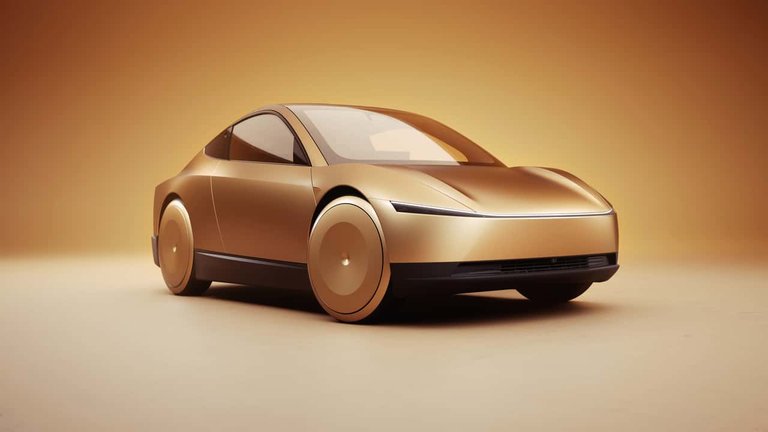What is the potential of robotaxi?
This is a topic that is often discussed by many within the Tesla community. analysts are starting to figure some of this in their work.
In this article, I am not going to dive into projections or different numbers. There is a ton of information online where people went through the different models they created.
What I find important is the process that we are potentially looking at and why this will succeed. bear in mind, what we are discussing here will also apply to the Tesla Semi. For me, that is a more interesting concept since we know trucking is only going to grow.

The Potential of Robotaxi
Robotaxi is an idea similar to Lyft and Uber. Basically, it is people utilizing a vehicle that gets them from A to B. It is an extension on the taxi model which was around for almost a century.
Many feel the industry is already competitive. With Uber and Lyft dominating the market, how can Tesla hope to succeed. Then we have to add in companies such as Waymo.
Ultimately, none of these are likely to compete unless they enter into a partnership agreement with Tesla. It is something that Uber could do, which would benefit Tesla. That would open it up to tens of millions of customers instantly.
The primary driver of any of this analysis comes down to the cost per mile. What does the operator spend along with what is the price to the customer.
Here is where Tesla will have a couple of advantages.
The first is electric vehicles. Most of the present fleets are ICE vehicles. This means the cost are fairly standard. EVs are operating on a different plane.
We have a long track record of battery costs declining. This is something that is continuing. Since that makes up such a large part of the cost of the vehicle, we are expecting affordability to expand.
Basically, this means lower up front costs are time goes by.
The other advantage will be autonomous. This is something that Waymo is competing with yet leaves Uber and Lyft behind.
In the United States, the cost of the driver is the most expensive part of a fare. This means that removal, which autonomous does, is going mean a lower cost of operation. We can easily see how this translates in the price charged.
Scaling
There is a tipping point with this.
It is generally agreed that the average cost per mile, in the US, of vehicle ownership is around 70 cents. This is essentially the tipping point.
What happens once the price of a robotaxi is less than 70 cents? The obviously conclusion is that a portion of the population will start to do away with their personal vehicles. We can expect to this to be evolutionary over time.
The question is how many vehicles much be manufactured to get to this level? That is one of the uncertainties.
Another key point is the business model of the likes of Waymo and Cruise. Many feel they are competitors but that is not really the case. These entities use geofencing as their method of training. This means the vehicle can only operate within pre-defined areas. If it extends outside of that, there is no service.
Couple this with the expense of the vehicles and we can see how this is hindered with regards to scaling.
Tesla takes a different approach whereby people's vehicles can operate outside pre-defined areas.
Then we have the cost. It will take Tesla a while to scale but the others are likely going to face stiff pricing competition at some point.
Ownership Makeup
Many are questioning how the ownership makeup with be.
To start, some believe a large number of existing owners are going to put their vehicles in the fleet. On this, I am not so sure. Certainly, some will but I do not think it will be an overwhelming percentage.
Instead, I think the fleets in particular areas will be owned by different investors. In other words, people are going to buy the vehicles specifically to have it operate within the network. We will likely see everything from an individual owning one vehicle to those with large fleets.
But what about Tesla?
Some theorize that it is going to stop selling cars and simply offer robotaxis. On this I disagree. We will see some company owned vehicles but not as the majority. Tesla will populate newer areas with its own vehicles to get things rolling. However, I do not foresee this as the main business model.
A more realistic approach is to build and sell the robotaxis, then take a cut of each payment as part of using the companies platform. Thus, there will be a split between the vehicle owner and Tesla.
The ultimate success boils down the ability to manufacture and the data that is garnered. Here is where Tesla could flex some muscles. It has, by far, the most real world data and that is only going. This is being fed through an increasing number of GPUs, with their for 100K cluster going online.
Posted Using InLeo Alpha
Congratulations @taskmaster4450le! You have completed the following achievement on the Hive blockchain And have been rewarded with New badge(s)
Your next target is to reach 210000 comments.
You can view your badges on your board and compare yourself to others in the Ranking
If you no longer want to receive notifications, reply to this comment with the word
STOPThe world is moving to another pattern of vehicles that is outrageous and seeing how these types of cars in years to come will replace cars like lexus, venxa and even many more is something to be optimistic about the future